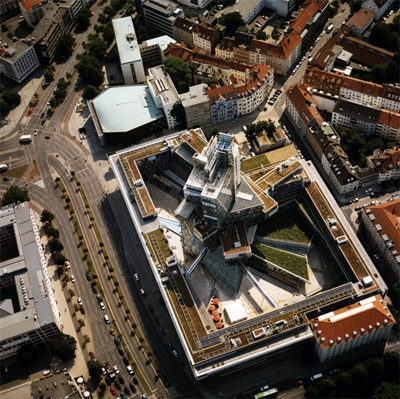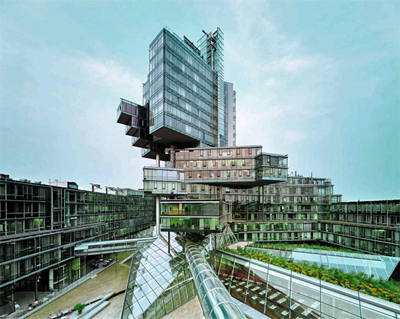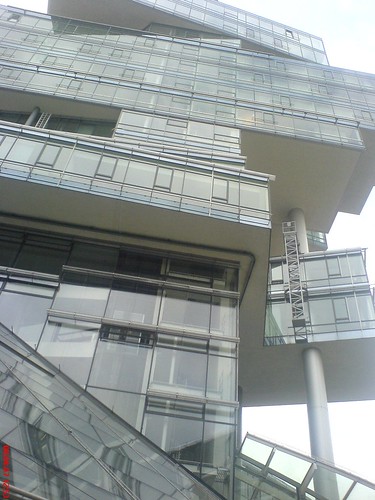



The Norddeutche Landesbank in Hannover, Germany employs gardens, solar chimneys and light reflectors to deal with temperature, light and the enjoyment of the inhabitants. While the building is dramatic and extremely powerful from a visual standpoint, one has to wonder at what point do the architectural complexities and structural acrobatics eradicate the environmental achievements.

The subject of low-tech vs. high-tech was discusses and Jantzen showed several very good examples of low-tech, dumb structures that are actually very intelligent in terms of their environmental design. These included pueblos, tepees, trullis, igloos and yurts
More than anything the lecture made it clear (to us) that Europe is taking environmental measures quite seriously in building design; whereas the industry in the United States seems to be responding to environmental design out of fashion and/or political correctness.
Behnisch has 2 offices in the U.S. and 1 office in Europe – the data from their website suggests that they have completed 19 projects in Europe since 1996 and 1 project in the U.S. in the same time period.


....." Some critics find the work of the Behnisch office too chaotic and imperfect, too unmonumental. Yet the advantage of their responsive approach most visible here is that a big building can be treated like lots of small ones, almost like a mini-city.
This holds the scale down and allows flexibility, for without a great preconceived plan, there is room to incorporate site influences, existing buildings-Siemens House quietly absorbed-and to allow for growth and change. Most important of all, human scale is retained throughout and numbing repetition avoided. Every floor gains a different character: in the tower the lobby changes shape or an office wing cantilevers further. There are frequent views out for orientation. It was wise to give the ground floor back to the city with shops and cafes to animate the public realm, while the protected water court marks the beginning of the larger institution as well as helping the environmental strategy.
Lively and memorable, the tower as landmark is different from each side. Its appearance is enhanced by areas of special colour-coated glass added for their reflective effect, part of a colour design policy which is another late Behnisch trademark. The high-tech brigade may fume about the catholic variety of details in this architecture, but professionalism does not necessarily entail the perfection of the machine.
The issue is more profound : Mies's 'God is in the details' reflects a monumental architecture striving for the eternal in its perfection, and flexible only through its sheer indifference to change.
Behnisch's situational architecture accepts a state of flux, always open and always developing, allowing for growth, interacting with life...."
Peter Blundell Jones- Architectural Review 2002

No comments:
Post a Comment